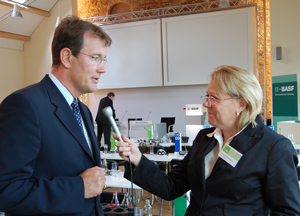 BASF Agricultural Products division president Michael Heinz is in a good mood because prices for farm products are higher and farmers are spending more money on their input costs to increase production. “It makes us very excited because when the farmer is in a good mood, in general, we are in a good mood,” Heinz says. This optimism was the primary message at the BASF global press conference in Germany on Wednesday.
BASF Agricultural Products division president Michael Heinz is in a good mood because prices for farm products are higher and farmers are spending more money on their input costs to increase production. “It makes us very excited because when the farmer is in a good mood, in general, we are in a good mood,” Heinz says. This optimism was the primary message at the BASF global press conference in Germany on Wednesday.
This year has shown the importance of innovations for farmers, and Heinz says innovation is the whole goal of BASF. He is especially pleased with the performance of Headline in improving the health and vitality of plants, especially corn. And he talked about how BASF is working on seven new active ingredients and a new herbicide tolerance project. The increasing production of corn for ethanol in the United States is also creating new opportunities for BASF to help grower meet the increased demand. Specifically he notes the development of a wholly new herbicide with the code name of BAS 800H which has “outstanding activity against broadleaf weeds.”
Listen to my interview with Michael here:
basf-germany-heinz.mp3

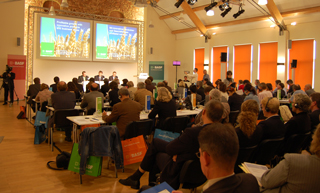 I have been an ag journalist for 25 years and never participated in an event quite like the global press conference for BASF here in Germany.
I have been an ag journalist for 25 years and never participated in an event quite like the global press conference for BASF here in Germany. 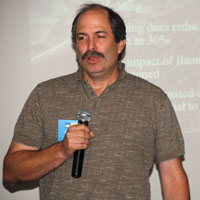 Raj Hulasare with Temp-Air introduced the application of propane heat remediation at the 2007 Propane Technology Forum and Scientist Terry Smith with Mississippi State University has applied that concept to his research in dairy sanitation. Terry and I discussed how propane heat sanitation offers dairy producers a chemical-free option when maintaining the health of their dairy cows.
Raj Hulasare with Temp-Air introduced the application of propane heat remediation at the 2007 Propane Technology Forum and Scientist Terry Smith with Mississippi State University has applied that concept to his research in dairy sanitation. Terry and I discussed how propane heat sanitation offers dairy producers a chemical-free option when maintaining the health of their dairy cows.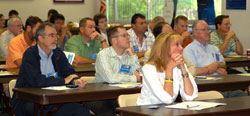
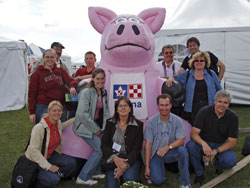 Here’s a picture of our cohort at the
Here’s a picture of our cohort at the 
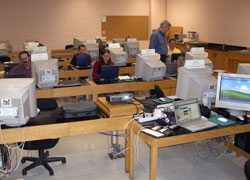 Okay. Here’s our first in class post and this is the cohort, as Owen Roberts calls it.
Okay. Here’s our first in class post and this is the cohort, as Owen Roberts calls it. It’s a brisk but sunny and beautiful morning here at the University of Guelph.
It’s a brisk but sunny and beautiful morning here at the University of Guelph. BASF is into just about everything, including wine. We toured the compnay’s Weinfachgeschaft, which handles about a million bottles of wine a year – about 2,000 different labels. Most are German wines, but they also handle a nice selection from around Europe and some other countries as well. BASF even has its own private label wines.
BASF is into just about everything, including wine. We toured the compnay’s Weinfachgeschaft, which handles about a million bottles of wine a year – about 2,000 different labels. Most are German wines, but they also handle a nice selection from around Europe and some other countries as well. BASF even has its own private label wines. 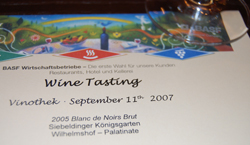 So, this was part of the reason I ended up quite ill last night – a glorious wine tasting with our host. It was great, but combined with jet lag, lack of sleep, lack of food, and just general exhaustion it was not so good for my system. We started out with a wonderful sparkling wine toast and followed up with a selection of eight different wines, both white and red, from the Palatinate region here in Germany, as well as one each from Portugal, Italy, Spain and France.
So, this was part of the reason I ended up quite ill last night – a glorious wine tasting with our host. It was great, but combined with jet lag, lack of sleep, lack of food, and just general exhaustion it was not so good for my system. We started out with a wonderful sparkling wine toast and followed up with a selection of eight different wines, both white and red, from the Palatinate region here in Germany, as well as one each from Portugal, Italy, Spain and France. 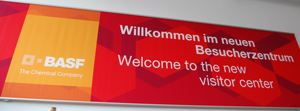 Hello from Germany. I am here in a cute little hotel in Speyer, feeling much better today after feeling pretty horrible last night. A long, delayed trip got me here just as everyone was ready to leave on the first leg of BASF visit, so I barely had time to change before heading out to see the BASF welcome center and do a bus tour around the plant, which is huge.
Hello from Germany. I am here in a cute little hotel in Speyer, feeling much better today after feeling pretty horrible last night. A long, delayed trip got me here just as everyone was ready to leave on the first leg of BASF visit, so I barely had time to change before heading out to see the BASF welcome center and do a bus tour around the plant, which is huge.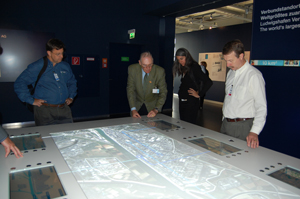 In the welcome center they have an interactive map of the plant site which allows you to see how big it is in relation to some of the world’s major cities, which was quite interesting – needless to say, it compares pretty favorabily. We could have spent hours wandering through the welcome center, but we really only had maybe a half hour. There is so much to see and so many interactive exhibits and videos. The new welcome center was just opened this year and already they have had 20,000 visitors! They get about 50,000 visitors normally to the site each year, mostly customers of BASF. The welcome center is open to the public.
In the welcome center they have an interactive map of the plant site which allows you to see how big it is in relation to some of the world’s major cities, which was quite interesting – needless to say, it compares pretty favorabily. We could have spent hours wandering through the welcome center, but we really only had maybe a half hour. There is so much to see and so many interactive exhibits and videos. The new welcome center was just opened this year and already they have had 20,000 visitors! They get about 50,000 visitors normally to the site each year, mostly customers of BASF. The welcome center is open to the public.